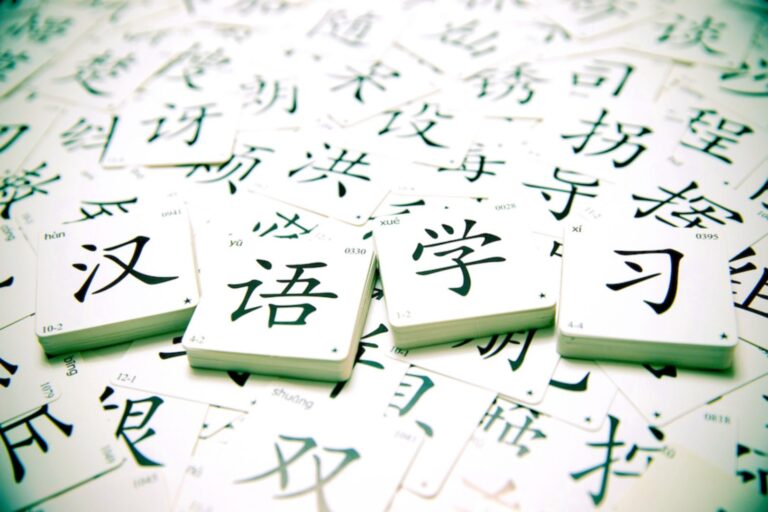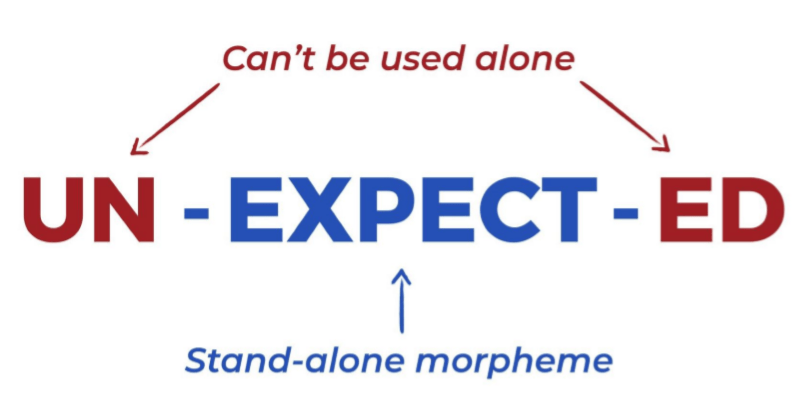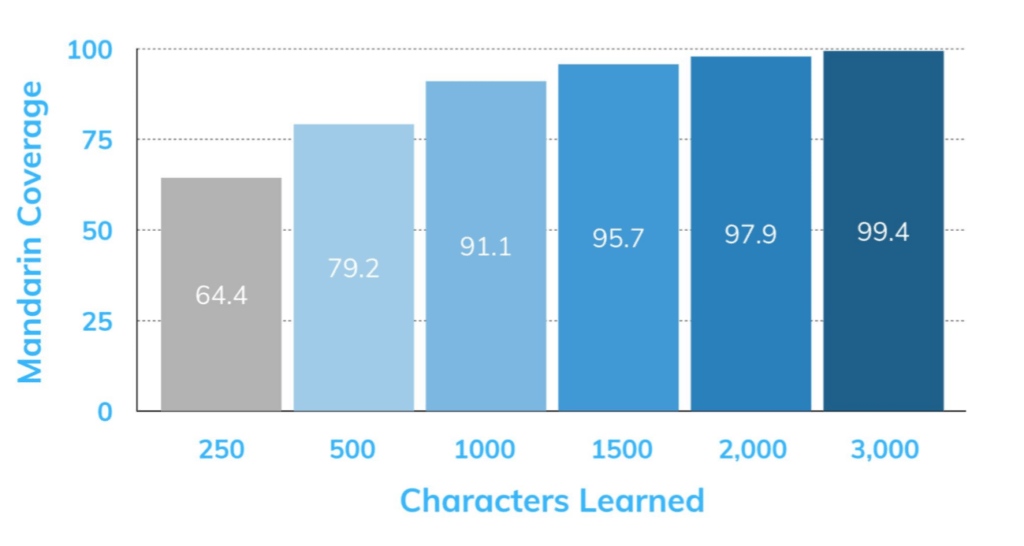Chinese Characters: Learn them as soon as possible

To speak Chinese fluently, you will need vocabulary. To acquire vocabulary, you need to read (and listen) a lot, and to read; you need to be able to decipher the Chinese characters.
Once you’ve started to get to grips with pronunciation, you should jump into characters with both feet. Below are a few reasons why:
1. Learning a word without knowing its characters first is top-down learning
Learning Chinese characters first creates many more connections to a word, and more connections means less forgetting.
Without attaching a new word to foundational knowledge, your brain will see the word as unimportant and will quickly delete it.
2. Knowing Chinese characters is far more efficient
The majority of Chinese words are structured very logically compared to English. Most are just as straightforward as the word “outdoors,” “seatbelt,” or “playground.” Now, imagine trying to learn “playground” without knowing what ‘play’ or ‘ground’ meant!
3. Characters can be words, too
People like to compare Chinese characters to the English alphabet, in terms of their function in Chinese. In reality, however, they are “morphemes.” Morphemes are the smallest meaningful unit of a language, which we like to call “mini-meanings.”
Here’s an English example:

We can split “unexpected” into “un-expect-ed.” You use neither “un-” nor “-ed” by themselves, but they both have their meanings and also influence the definition of the word. Chinese characters function in the same way. Some of them are words, some of them are not, but with rare exception, they are all morphemes.
By learning characters, you will naturally learn many words, and at the same time, develop a repertoire of building blocks vital for understanding and memorizing compound words.
4. You can notice how Chinese words are structured
There are a limited number of ways characters can combine to form Chinese words. These ‘word structures’ are a fascinating aspect of Mandarin that sets it apart from many other languages, and awareness of them provides a couple of advantages.
The first benefit is the ability to notice patterns in words that you may not have seen otherwise. Let’s take a look at one of the most common Mandarin word structures, which we like to call the “biased” structure. We call it that because the first Chinese character always holds the critical piece of information that defines the word.
Take a look at these examples:

The second character 人 rén means “person,” and the first character (or “morpheme”) signifies which kind of person. For example, ⼯人 is a worker (“work person”). ⼥人 is a woman(female person) 富人 is a wealthy person (“rich person”), etc. Learning patterns like these within Mandarin words will allow you to learn new words a lot faster, and it makes learning vocabulary much less intimidating.
Another benefit of knowing these structures is the ease of creating mnemonic devices. For example, 说明 shuōmíng (“Explain”) consists of 说 shuō (“to speak”) and 明 míng (“bright/clear”). This word is a “Verb-Result” structure. Verb-Result words always have a verb as the first character and the result of that verb as the second. When I “speak” until something is “clear,” then I’ve “explained” it. What a cool way of learning a new word!
Even if you weren’t aware that 明 míng had the alternative meaning of “clear,” you could create a mnemonic image in your mind based on the more common meaning of “bright.” For example, you could imagine a light bulb lighting up over someone’s head.
How Many Characters Do You Need to Learn?

It is essential to recognize that Chinese, like any other language, has characters and words that are used more frequently than others, and this is where you should start.
The 250 most commonly used characters make up a whopping 64% of everyday language. Move onto the most common 500 characters, and you’ve reached around 80%.
Getting to 3,000 characters is your ultimate goal, which is the average amount that a native Chinese speaker can recognize.
Now you know many characters you need to learn, it’s time to share with you the best possible way to learn characters in existence right now.
How to Learn Chinese Characters Easily
The most effective methods for learning characters employ specific memory techniques that tap into our innate ability to visualize. These same memory techniques are used by world memory athletes to perform such feats as memorizing a deck of cards in 16.96 seconds or 70,000 numbers of Pi in 17.25 hours. The fantastic news about this is that anyone can learn how to remember like a memory athlete; you just need the right coaching.
Introducing: The Hanzi Movie Method

The Hanzi Movie Method is the technique for speed memorizing Chinese characters that is the core of our entire 4,200-lesson curriculum. Each Chinese character becomes a movie scene in your head, complete with actors, props, sets, and scripts. All of these directly map onto an element of the character that you want to memorize.
Use objects to remember the character components
You can use our suggestions, those of other course members, or choose a completely new 3D object that represents the meaning or appearance of the component you need to learn. We call these objects “props.”
Use people and places from your life to remember the pinyin and tones.
Use people to remember the pinyin initials:
Choose the people from your life who mean the most to you to be the “actors” in your movie scenes. These can be real people or fictional characters from books, movies, or TV shows you love. The better you know them, the easier they will be to remember.
Use places to remember the pinyin finals. Choose buildings you know well to represent the endings of Chinese syllables known as ‘finals.’ These “movie sets” can be places you’ve lived, homes of friends and families, workplaces, stores, or any other place you know well.
Use rooms to remember the five tones


The rooms within your sets will represent the tone of the character you are learning. Outside the entrance represents the first tone, in the hallway or kitchen, represent the second tone, bedrooms and living room represent the third tone, the bathroom and backyard represent the fourth tone, and the fifth tone is on the roof.
Shoot movie scenes in your mind to remember any character forever
The movie scenes or “scripts” are the most fun part, and it’s where it all comes together. Your actor will interact with the various props within the right room of the right set to visually represent the meaning of the Chinese character you need to learn. Follow our expert guidance and suggestions from other learners on our course on how to do this for any character to create the most memorable “movie scene” possible.
Using this technique, you will learn how to read, pronounce, and even write any Chinese character in less than one minute, and never forget it.
As your skills improve, we will introduce “Special Effects” inspired by the teachings of world memory champions and our innovations from hundreds of hours of practice. Use different camera angles, extras, explosions, and slow-motion to make your mini-movies even more vivid and personal to you.
As you can see, there are a lot of moving parts to this method, and it takes between five and twenty characters to get the hang of it. Once you get in the swing of things, you will find that there is no better method for learning characters available.
That said, there are other ways of learning characters out there, and some of them work quite well. The most important thing is that you learn as many characters as possible, as soon as possible. Which method you choose to do that is up to you.
In for a Penny, In for a Pound
Once you start learning characters using a method that works, your goal should be to learn how to read and pronounce the most common 3,000 of them as soon as you can. Don’t try to learn them all at once, though, as too much bottom-up learning gets demotivating. Chip away at characters daily by signing up for our course now.








